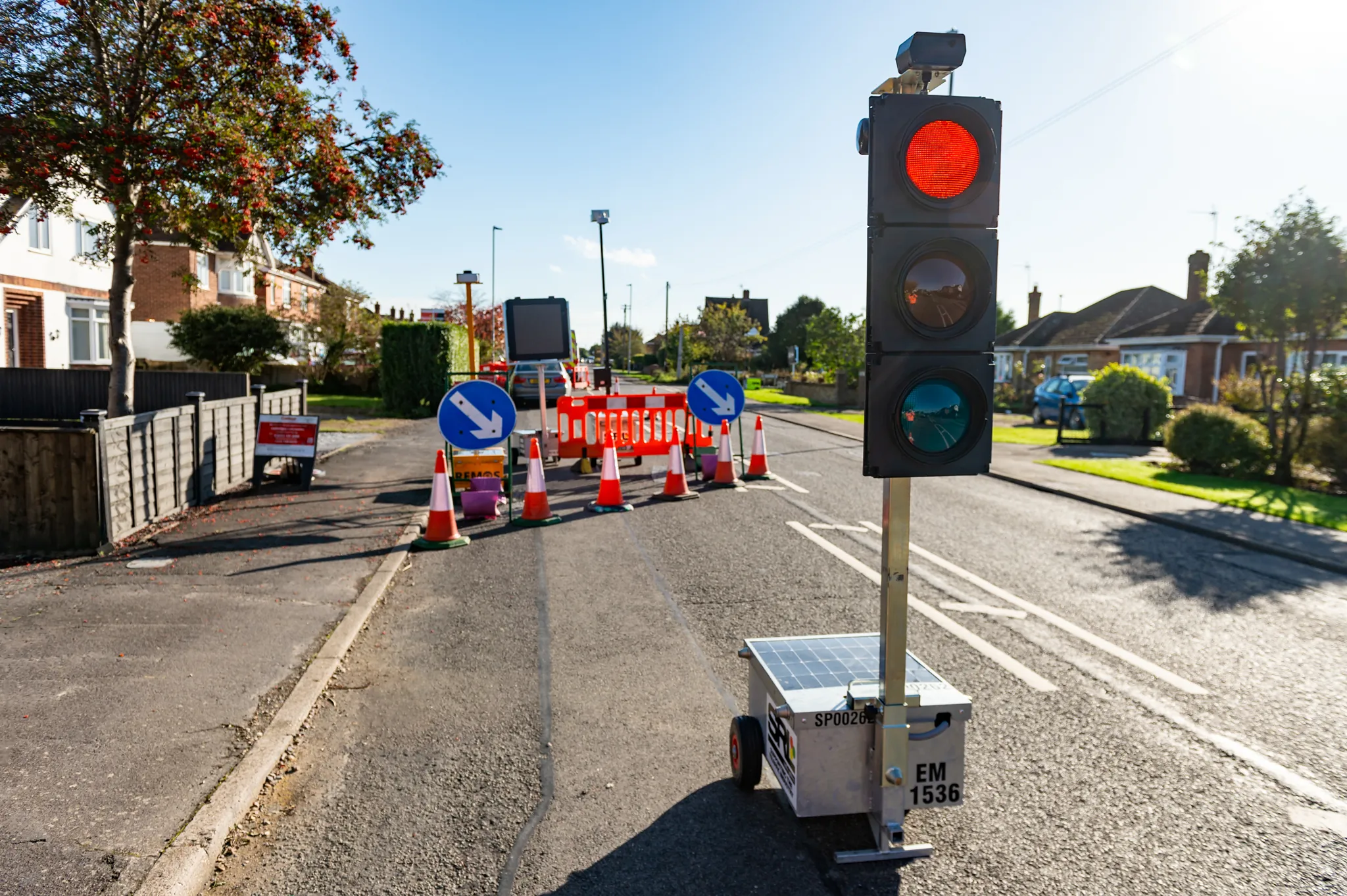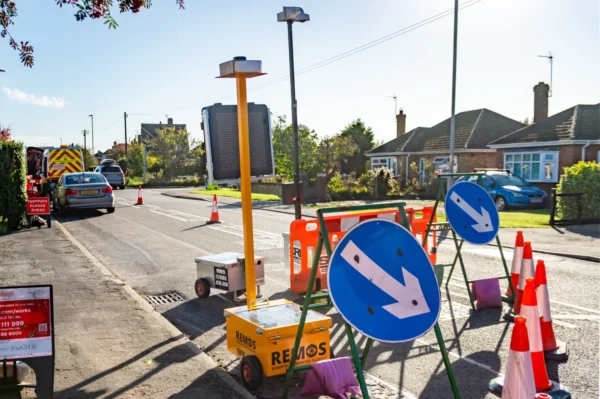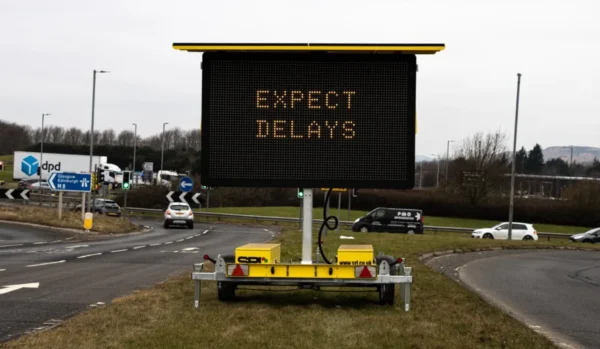Hundreds of you responded, and here’s what you told us:
// Traffic Flow – 42.6%
// Health & Safety – 31.5%
// Manual Timing Permits – 22.2%
// Scarcity & Cost of Labour – 3.7%
These figures speak volumes about the pressures facing those working in and around temporary traffic management every day. Let’s break this down a bit further—and highlight some of the challenges operators face on the ground.
Traffic Flow Tops the List
It’s no surprise that traffic flow emerged as the top concern. When roadworks go in, frustration often follows—for drivers, businesses, and the general public. But behind every temporary signal or lane closure is a highly complex balancing act. Operators are working hard to keep everyone moving safely, but are often constrained by:
// Tight spaces and limited visibility
// Coordination with multiple stakeholders
// Unexpected congestion patterns
// Public pressure and media scrutiny
Managing flow effectively isn’t just about technology—it’s about on-site decisions, sometimes made in the moment, often in tough conditions.
Health & Safety: An Ongoing Struggle
A staggering 31.5% of delegates cited health and safety as their biggest concern—and rightly so. Operators are increasingly exposed to both physical and verbal abuse. According to National Highways, there are over 300 incidents of incursions and abuse reported every single week.
Imagine trying to do your job while cars swerve into your workspace or being shouted at for simply directing traffic. This is the reality for many on-site teams, and it’s taking a toll.
Health and safety isn’t just about high-vis and hard hats—it’s about mental resilience, clear protocols, and making sure everyone gets home safe.
Manual Timing Permits: Slowing Us Down
22.2% of responses flagged manual permit timing as a major pain point. In a world that’s moving rapidly toward digital, operators still deal with processes that are:
// Paper-based or inconsistent
// Dependent on local council systems
// Subject to delays and disputes
Delays in permit approvals can lead to knock-on issues with road user compliance and contractor scheduling, which in turn can exacerbate traffic flow and safety issues.
Labour: Scarce and Expensive
While only 3.7% listed labour scarcity and cost as their top concern, it’s arguably a challenge that underpins the rest.
We’re facing a shrinking pool of skilled operators—many of whom are being asked to do more with less. That includes:
// Working longer shifts
// Covering multiple roles
// Taking on higher personal risk
With fewer boots on the ground, maintaining standards for flow and safety becomes exponentially harder.
So, What’s Next for Temporary Traffic Management?
At SRL, we’re committed to supporting the industry with solutions that make a real difference.
The data from HAUC gives us a roadmap—and it’s clear that empowering those on the ground, simplifying operations, and prioritising safety and flow will be critical as we look ahead.
If you were one of the many who shared your insights—thank you. Let’s keep talking, and more importantly, let’s keep improving.
This presentation provided information about remotely operated signals. Find out more about SRL’s solution, REMOS, by clicking here.




